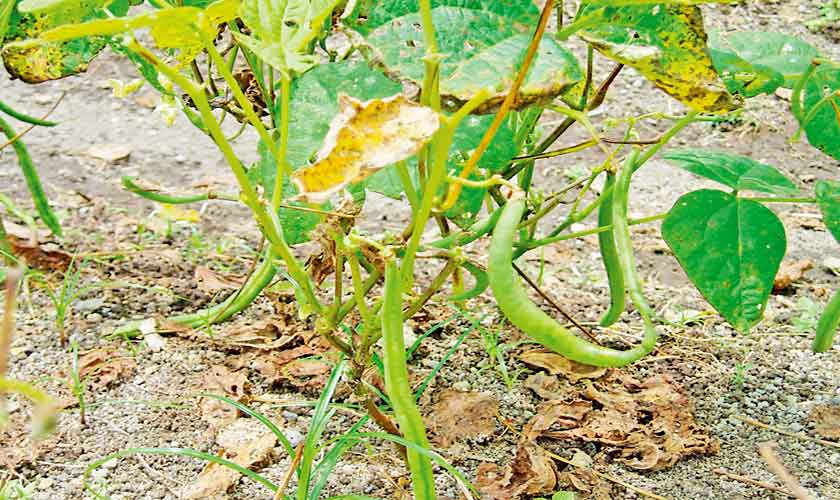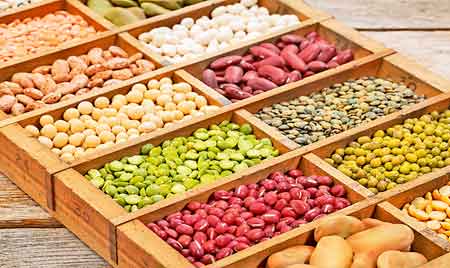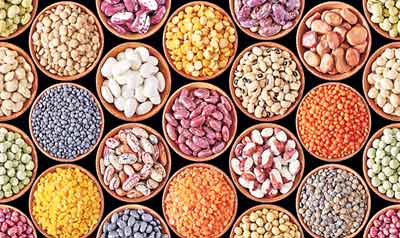Moth bean (Vigna aconitifolia), a drought-resistant legume, despite being a nutrient food crop, has been put on low priority for research and farming by the government as well as farmers.
AGRICULTURE



Moth bean (Vigna aconitifolia), a drought-resistant legume, despite being a nutrient food crop, has been put on low priority for research and farming by the government as well as farmers.
It is a hardy crop with potential medicinal values as well. It hardly faces any kind of threat from pests and diseases, however, it is still not given priority in cultivation by the farmers or the government departments concerned with agriculture.
Farmers in Sindh reportedly lost this crop seed many years ago due to multiple reasons, mainly low cultivation priority. Only in Tharparkar District farmers grew this legume on their land after the monsoon rains in the region this year. This is why compared to other grains and cash crops; the moth bean does not have sufficient data available about its cultivation in the province of Sindh.
Information collected from rural areas of Sindh reveals that this seed can grow in the wild in arid, semi-arid and river Indus catchment areas during monsoon season.
Elderly farmers in catchment area of River Indus still recall the previous practice when they used to cultivate this important crop on a wider portion of land with other pulse varieties. They claim to have cultivated the best nutritious moth beans many years ago for supplying to the major cities of the country.
The farmers in barrage areas are still willing to produce this crop, but since government does not have any priority or assurance for the producers of purchase at reasonable rates, they are reluctant to harvest the moth bean.
According to farmers, this crop does not require extra water, care and reportedly has a positive effect on the less yielding soil. The seed is cooked and processed to preserve it for a long time and is used as a crunchy snack in urban and rural areas. Pulse cultivation itself is losing priority in Sindh mainly because of water scarcity and unfavourable market mechanism.
To come up with mechanisms to counter the situation, researchers and journalists visited Haji Shahr, a flourishing village of artisans, growers, and traders and an important grain market.
It is located at the bank of River Nari, which flows from mountainous areas during monsoon and irrigates the wide agriculture fields. The group also visited standing crops like sorghum, mung bean, moth bean, tinda and tauri and observed practices the local farmers have adapted there.
Since there is a single crop season, land is quite fertile. Growers said they do not use chemical inputs. They take first water as enough for growing each crop without fertiliser and pesticides. Growers of this area use the moth bean for intercropping with mung and sorghum. They produce sorghum, mung bean, moth bean, mustard, rocket eruca sativa, tinda (apple gourd) and tauri (ridged gourd).
Haji Shahr supplies produce to Sindh, Punjab, and Balochistan. Basic Development Foundation (BDF) organised the visit for researchers to observe the crop pattern, irrigation system through natural rainy rivers, and also to collect local seed varieties, which are not being used in Sindh anymore. These local seed varieties either have been replaced by high yielding varieties (HYV), hybrids and genetically modified (GM) seeds or have been put on low priority as compared to other grains and cash crops.
Comparing priority of crops cultivation, Altaf Mahesar of BDF said the semi-arid lands everywhere do not require more water for cultivation. It is a safe haven for organic food crops, but needs political will on part of the government authorities.
He said it was an old practice that the Sindh government only fixed rates of major crops like wheat, rice, cotton and sugarcane. It has never fixed rates of these valuable food crops. That is why famers are looking reluctant to produce these crops. “There is a need to have incentives for farmers in the shape of welfare schemes to encourage them,” he added.
He said government instead of providing subsidy should purchase products by offering reasonable rates so the farmers feel secure in terms of incentive.
He said intercropping in Balochistan was a rare example of using rain water to get maximum product. “Sindh has the same practice of intercropping in barrage areas, but they spend more cost in cultivation due to more water and use of chemical input,” he added.
Abdul Sattar, a local farmer in Haji Shahr, a popular grain market in Kachhi district of Balochistan, said farmers calculate the time period and sow seeds of three-four crops including moth bean, mung bean and sorghum, which are harvested at the same time.
“This practice is beneficial because farmers get the product of three to four crops at a time through intercropping. The crops are grown together on one-time water. There is no other cost of cultivation, except expenses of ploughing, harvesting, and thresher,” Sattar said.
The group saw the organic crops of local seeds, its product, use and value in market.
The seeds collected from different farmers include wheat, sorghum, mung bean, moth bean, mustard, rocket eruca sativa, tinda (apple gourd), and tauri (ridged gourd). The purpose was to reintroduce these crops to the farmer communities in Sindh.
Local seeds of food grains, vegetable and fruits are disappearing in Sindh, except some parts of Thar Desert, Achhro Thar, and Kohistan. Recent reports from these arid zones portray a grave picture of agriculture, as pesticides and fertiliser dealers have launched their business there.
The unchecked use of chemicals is impacting human health, poisoning the water sources of these regions, as well as contaminating the soil itself. Farmers are concerned about the constantly declining productivity and decreasing soil fertility.
Bhag Nari Town, besides being known for its cow breed is also a major grain market. Farmers use preserved indigenous wheat Sonalika and Pawan varieties here. Researchers met with these farmers to understand their techniques and mechanisms of preserving the seeds.
Moth bean possesses healthy nutrients, particularly calcium, fibre, iron, magnesium, phosphorus, sodium and vitamins. This crop matures in three months. Harvesting of crop is completed by August and September. But in case of delayed sowing, harvest starts in October and November.
The writer is a staff member